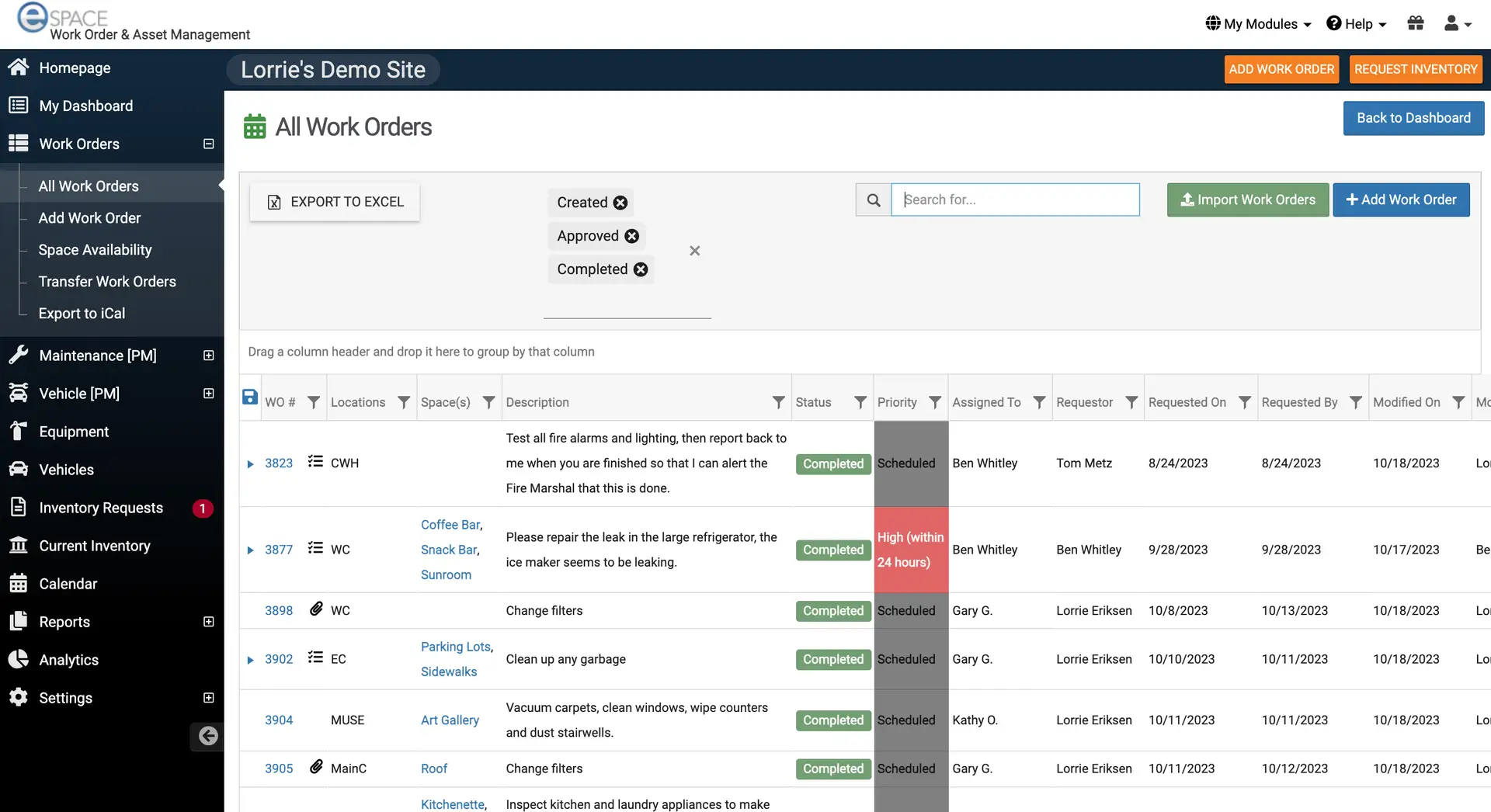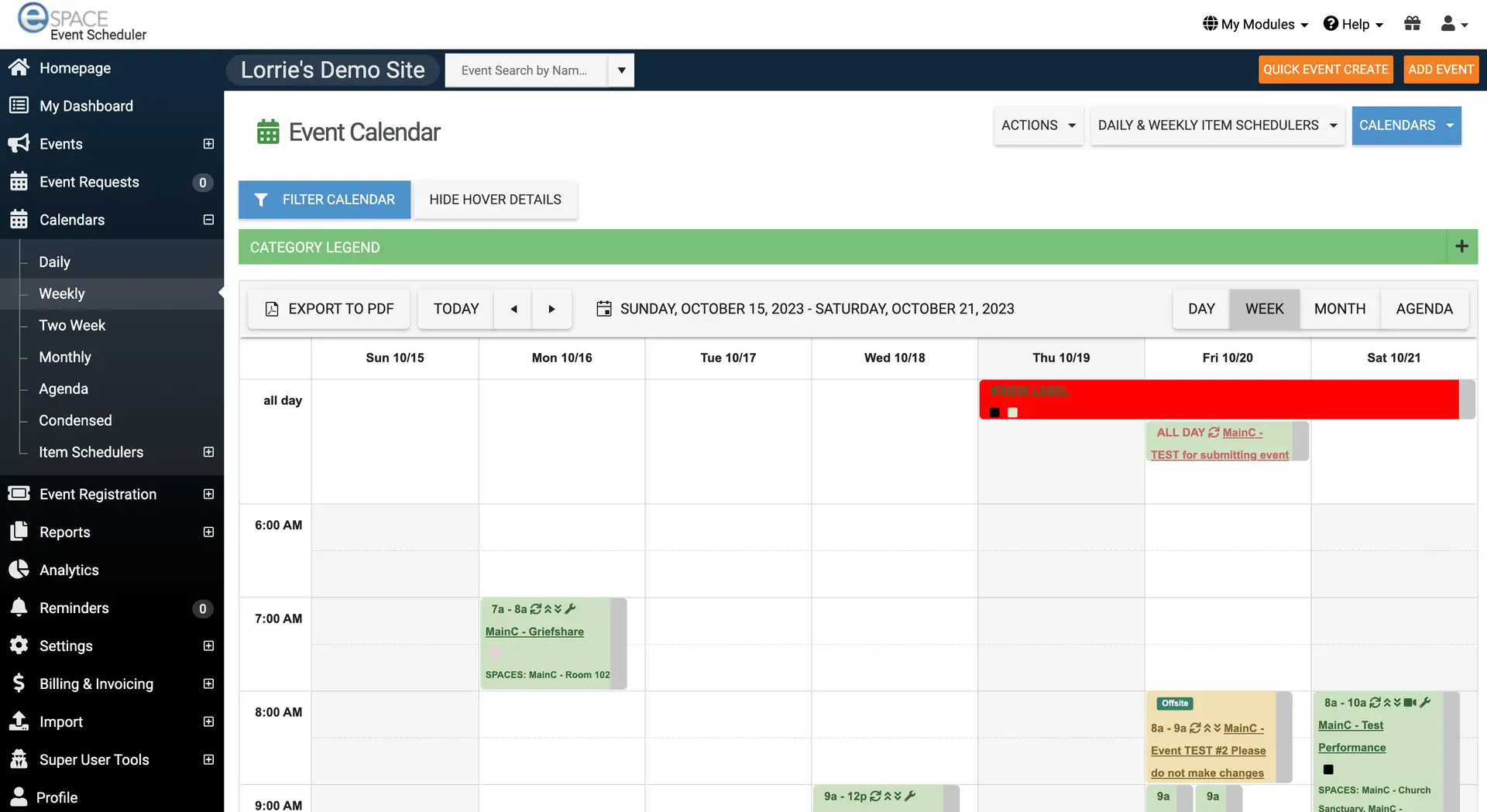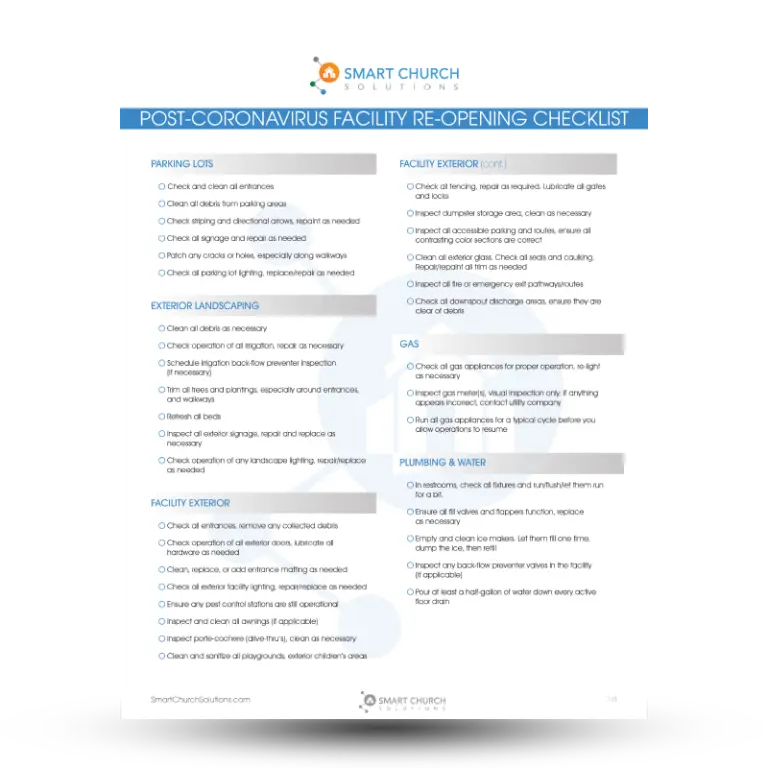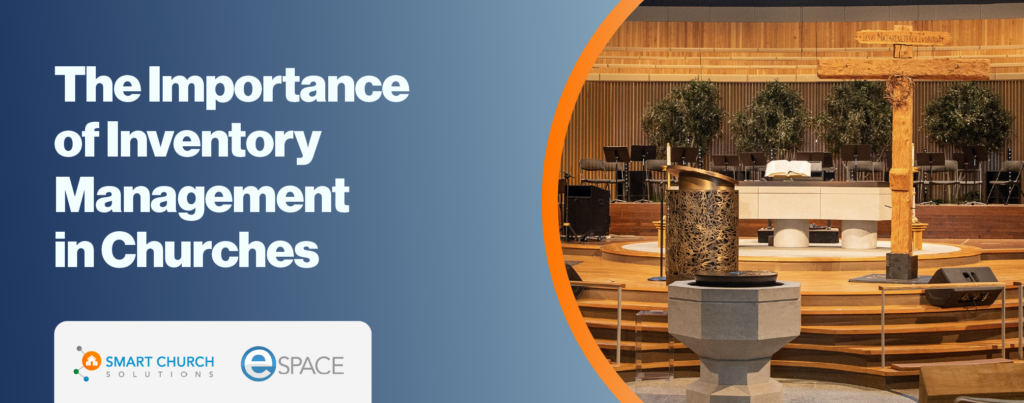In a church’s dynamic ecosystem, collaboration between key personnel is essential for smooth operations, effective stewardship, and creating an environment for worship and community. Among these crucial partnerships is the synergy between the Executive Pastor and the Facility Manager. In this blog, we’ll explore the vital role of this collaboration and how it contributes to a church’s overall health and vitality.
Understanding the Roles
Before delving into the collaboration, it’s important to understand the distinct roles of the Executive Pastor and Facility Manager. The Executive Pastor is responsible for providing strategic leadership, overseeing ministry operations, and supporting the church’s vision and mission. The Facility Manager focuses on the church’s physical aspects, including maintenance, safety, cleanliness, long-term capital reserve planning, and facility usage.
Something to Note:
Not every church has an official role or title of “executive pastor.” However, that does not change the fact that someone is responsible for those duties. The title may be Business Administrator, Associate Pastor, Operations Director, Chief Operations Officer, etc. For this post, we will lump them all under the Executive Pastor (XP) title.
Shared Vision, Communication, and Respect
Collaboration begins with a shared vision and open lines of communication between the Executive Pastor and the Facility Manager. Both parties must align their objectives with the church’s overarching goals. They must also communicate regularly to ensure everyone is on the same page. This involves discussing priorities, upcoming events, and any issues or concerns related to the church facility.
Another key element of a solid and productive working relationship is mutual respect. Both parties must respect each other’s individual and collective missions. It would be easy for the XP to say all the annual budget should go to ministerial staff and mission trips, while the Facility Manager may think that gold-plated faucets are the way to go.
In these examples, neither argument holds water. The church—the body of Christ—does not exist to care for facilities. Yet, very few churches in North America could exist or thrive without a properly functioning facility. This is a healthy tension. But only if there is mutual respect.
Strategic Planning and Budgeting
The Executive Pastor and Facility Manager are integral in strategic planning and budgeting. While the Executive Pastor provides input on ministry needs and priorities, the Facility Manager offers insights into facility requirements, facility usage, life cycle considerations, and maintenance schedules. By working together, they can develop strategic plans and budgets that allocate resources effectively, balancing ministry goals with facility upkeep.
Far too often, the “wheels of the bus” fly off during budget season. In many senses, the XP is the “giver” of the budget. And too often, the loudest voices get the most money. I am going to be very blunt: How many times does the worship team or tech team want the latest and greatest new gadget? They have to have it. And yet the roof is 18 years old with a remaining life of 2 years. There are no capital reserves. The roof drains are leaking (maybe right over the soundboard). The carpet is beyond its useful life. You get the point.
This puts the XP in a tough spot unless the XP and Facility Manager are on the same page regarding vision and respect.
Facility Maintenance and Upkeep
No one wants a dirty facility. No one wants it to be too hot or too cold. Everyone wants the facility to be inviting to guests. Yet, there is often a paradigm shift that needs to occur between expectations, wants, and resources available.
Maintaining a safe, welcoming, and functional environment is paramount for a thriving church community. The Facility Manager oversees day-to-day facility stewardship tasks that include, but are not limited to, maintenance tasks, cleaning, repairs, and landscaping, to ensure the facility remains in optimal condition. The Executive Pastor supports these efforts by providing guidance, resources, and assistance as needed, recognizing the importance of a well-maintained facility in supporting ministry activities.

Struggling to keep up with work orders, maintenance requests, and facility needs? You’re not alone. Many churches face the same challenges, but the good news is—there are tools that can help. Schedule a free call with an expert. We’ll show you how eSPACE can streamline these processes so you can focus on ministry, not maintenance. Book a time here.
Event Planning and Coordination
Church facilities are meant to be used. It hurts my heart when I see church doors open only 1-2 times a week. As a rule, next to the NFL, churches are one of the worst real estate users. NFL owners spend billions of dollars on stadiums with the primary purpose of eight home games and maybe a playoff game.
We do the same in the church world. I have seen churches spend tens of millions of dollars on wonderful facilities that sit empty for days or have sections (i.e. single purpose worship centers) that are used one day a week for 1-4 hours that day. This is not good stewardship of resources we have been given.
Other church facilities are used for various events, from worship services and weddings to community gatherings and outreach programs. The Executive Pastor and the Facility Manager collaborate closely to plan and coordinate these events, ensuring that logistical needs are met and the facility is prepared accordingly. This may involve scheduling, setting up, and coordinating with volunteers or external vendors to ensure events run smoothly.

Safety and Compliance
Safety and compliance are non-negotiable aspects of facility stewardship. The Facility Manager oversees safety protocols, conducts inspections, and ensures compliance with building codes and regulations. The Executive Pastor supports these efforts by guiding risk management and emergency preparedness and implementing policies to safeguard congregants and guests.
Would your team know what to do in a fire, medical emergency, or lockdown? The Emergency Preparedness Handbook equips churches with clear action plans for real-life emergencies like medical incidents, severe weather, and security threats. Download a free copy here.
For many churches, other means of security exist that are not necessarily related to the facility’s physical structure or elements. In most cases, these additional security measures are handled by someone other than the Facility Manager.
Long-term Planning and Development
In addition to day-to-day operations, the Executive Pastor and the Facility Manager collaborate on long-term planning and development initiatives. This is really what separates a Facility Manager from a facility maintenance person. There is a huge difference. The Facility Manager is skilled and experienced in strategic and long-term planning. This skill level, when coupled with that of the XP, makes for a very productive team.
Some of the long-term planning includes renovations, expansions, or capital improvement projects aimed at enhancing the facility’s functionality, accessibility, and aesthetic appeal. By working together, the XP and Facility Manager can develop strategic plans that align with the church’s vision and support its long-term growth and sustainability.
Other projects may include adaptation projects such as converting lighting to LED or adding a fire suppression system. These initiatives also require financial, utilization, and coordination planning.
Building Bridges for Church Excellence
Collaboration between the Executive Pastor and Facility Manager is essential for creating an environment where ministry thrives, and individuals feel welcome and valued. By sharing a vision, communicating effectively, and leveraging their respective skills and expertise, they can ensure that the church facility remains a beacon of hope, love, and service for generations to come.
Bottom Line: Together, these two people build bridges that connect hearts, minds, and spirits, fostering a sense of belonging and community that embodies the essence of church excellence.








